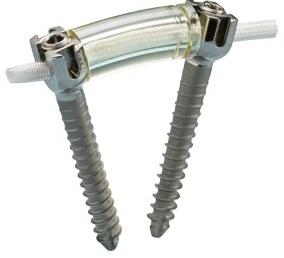Usted está aquí
Peruvian Journal of Neurosurgery
Two years of Lumbo-sacral spine dynamic stabilization in Rebagliati-Essalud Hospital during the period January 2012-October 2013
ABSTRACT
Objective: To determine the clinical outcome in patients undergoing dynamic stabilization in the neurosurgery spine service at HNERM during the period January 2012 to October 2013.
Methods: 25 patients with unstable spine that met the inclusion criteria for the placement of dynamic spine stabilization were selected.
Results: The average age of patients 46.4 years, minimum 6 and maximum 78 years. Sex: Male 16 (64%) Female 09 (36%) total 25 (100%). No previous lumbar 23 (92%), discectomy 02 (08%): prior lumbar surgery Sick time (months) 25.8 average, minimum 3 and maximum 72. Surgical approach Wiltse Total 15 (60%), medial approach 9 (36%) type, Hoober 1 (4%) 25 Instrumentation levels; 2 level 4 (16%), three levels 21 (84%). Days in hospital: average 3.72 min 3 max 5. Preoperative clinical features: EVA average 7.92 min 6 max 10 mod 8. Pain intensity mod 13 (52%), severe12 (48%). Postoperative clinical features: EVA average 4.16 min 3 max 8 fashion: 3. Pain intensity: mild 19 (76%), moderate 05 (20%) and severe 04 (14%).
Conclusions: Dynamic stabilization has demonstrated efficacy in pain control with a minimum length of hospitalization.



